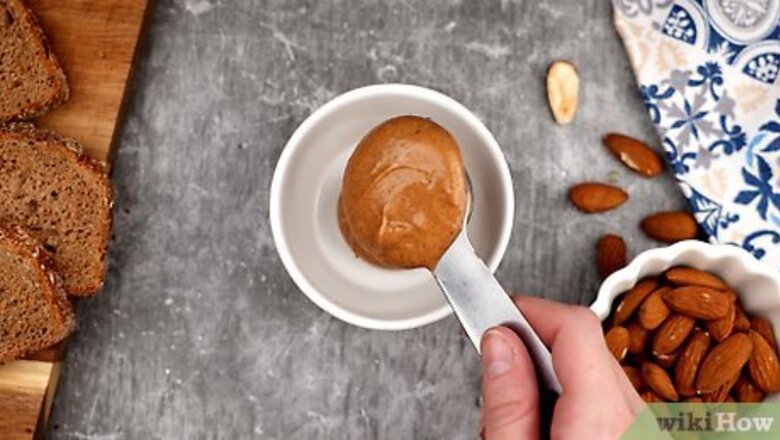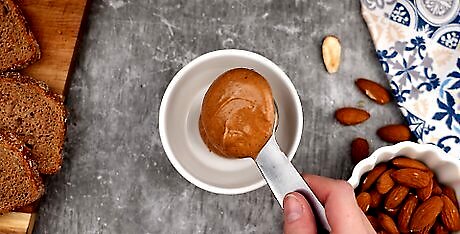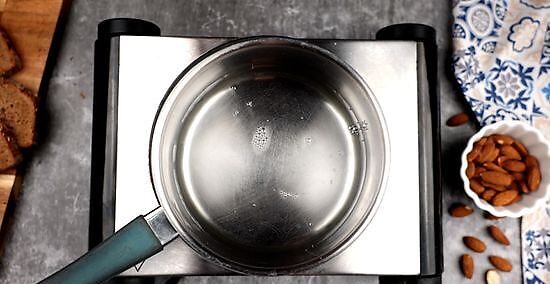
views
Microwave

Put the almond butter in a microwave-safe bowl. Transfer the amount of almond butter you need into a bowl. A serving of almond butter is about 1-2 tbsp (15-30 g), but feel free to melt as much as you'd like. Microwaveable bowls can be made out of ceramics, glass, and certain types of microwave-safe plastic. You may need to microwave the almond butter a bit longer if you’re heating up a large amount.

Microwave the almond butter on HIGH for 10 seconds. Place the bowl in the center of a microwave and close the door. Set the microwave to HIGH and heat up the almond butter for 10 seconds. Always start with 10 seconds to avoid overheating or burning your almond butter. Some microwaves are very powerful and 10 seconds might be all you need!

Stir the almond butter and check the consistency. Carefully take the bowl out of the microwave. Use an oven mitt or a towel if the bowl is really hot. Try stirring the almond butter to see if it’s creamy enough. If you’re happy with the consistency at this point, go ahead and enjoy your almond butter snack!

Microwave the almond butter for an additional 5 seconds, if needed. If you want to melt the almond butter more, put the bowl back in the microwave. Set the timer for 5 seconds and turn the microwave on. If you’re melting a large quantity of almond butter or it isn't quite as creamy as you'd like, keep microwaving it in intervals of 5-10 seconds until you’re happy with the consistency. Be sure to stir the almond butter between each interval! Since microwaves have hot spots, this helps you heat the almond butter more evenly.
Stovetop

Warm up a pan of water over low heat on the stove. Fill a small saucepan about halfway with water. Set the pan on a stovetop burner and turn the heat on to low. Note that this method only works for glass jars of almond butter. Don’t heat up a plastic jar or it could melt. If you want to melt less than the whole jar or if your almond butter isn’t in a glass jar, transfer the quantity of almond butter you want to use to a clean glass jar.

Add a few drops of water to the jar of almond butter. Unscrew the jar's lid and turn on the faucet to just a trickle. Quickly pass the mouth of the jar under the trickling water to add a few drops fall to the jar. You don't need to be super precise. Water helps soften the almond butter and makes it easier to melt.

Place the jar in the water and heat it up until the almond butter melts. Carefully set the jar into the pan of warm water until the jar is partially submerged. Leave the jar in the water, stirring occasionally, until the almond butter softens and melts to your desired consistency. Heating almond butter in the jar rather than directly in a pan prevents it from burning. The timing for this depends on how hot the water is and how much almond butter you're heating up, but it will probably take at least 5 minutes or so.
Storage Tips

Stir a new jar of almond butter when you bring it home to mix in the oil. Open up a fresh jar of almond butter when you get home from the store. Use a butter knife to completely mix all the oils at the top of the jar into the rest of the almond butter. Distributing the oil into the rest of the almond butter helps it stay creamy. That way, you’re not left with dry almond butter when you get towards the bottom of the jar. Note that this doesn’t work for no-stir varieties of almond butter.

Store jars of almond butter upside down to keep the top layer hydrated. Make sure the lid is on tightly, then flip the jar upside down. Place it in your refrigerator, pantry, or wherever you like to store your almond butter. When you flip the jar over to scoop some almond butter out, the almond butter at the top of the jar will be well-hydrated with the natural oils.

Stir 1-2 drops of peanut or canola oil into dry almond butter to revive it. Carefully pour just a drop or 2 of the oil into the almond butter. Use a butter knife to stir it in thoroughly. Peanut oil and canola oil are both neutral oils that can make it more creamy and spreadable without changing the flavor.




















Comments
0 comment